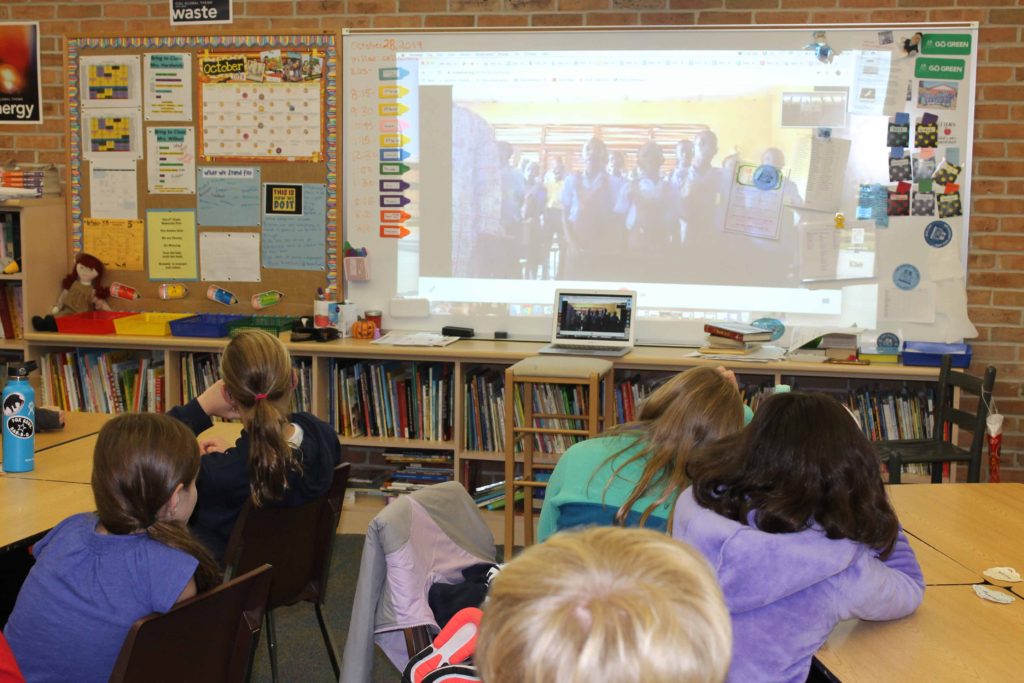Travel Programs As Curriculum

In recent years I have been hearing and having a lot of conversations about diction, which, as a former language teacher, I appreciate. I’ve heard about how some are trying to teach students to be “travelers,” not “tourists,” and to get a school community to stop calling travel experiences “trips,” and, instead, “programs.”
However, over the course of ten years of trying to teach myself the differences between these words and to apply that difference to the development of K-12 travel experiences, I began to question even that word–“experiences.” I wonder if we should be considering what we do with students abroad as curriculum just as we consider the “lessons” that most educators in the world teach in the context of the classroom.
Latin teachers, please correct me, but I believe that “curriculum” derives from the same Latin root as does “correre” in Italian, “correr” in Spanish, and “courir” in French–meaning, “to run.” Other forms of this root lead to the English word “course.” It then would follow that we might benefit from considering our curricula as races–races only undertaken by the most courageous. We certainly know that lessons go by quickly–usually too quickly. However, these “courses” also possess a clear beginning and ending; they require that the student follow an identified path (or break the rules…); they often require stamina, endurance, and focus; and the best performances usually result from training that involves repetition, feedback, reflection, and goal-setting.

Students from Pace Academy in Atlanta, Georgia participate in a virtual exchange, facilitated as part of GEBG’s Virtual Exchange Cohort.
Given our own training as teachers, we are usually pretty comfortable talking about “globalizing” a course. It’s not an easy task by any means, but it’s not a difficult jump intellectually to apply what we understand about classroom curriculum design (my go-to is Wiggins and McTighe’s Understanding by Design) and to modify the essential knowledge and skills that we teach such that these objectives are more connected to other people and places; such that they require skills that transcend the classroom; and such that they help students to understand themselves as part of larger, interconnected systems. And perhaps along the way we are thinking about the concept of “transfer,” talking about “competency-based education,” exploring tools like “standards-based grading,” and experimenting with new tools and technologies that will support our pedagogy.
But what about those trips–I mean, programs–through which we are attempting to develop each student as a globally competent citizen–in two weeks over Spring Break. Would you consider your programs “curricular?”
- Do your students see themselves as learners–as travelers, not tourists? As active students, and not passive participants?
- Do the students (including the leaders!) understand that the program will be a journey involving difficulty, endurance through discomfort, hard work, and the joy of uncovering new ideas, opportunities, and ways of being in the world?
- Does the program have clearly identified goals, and does the intentionally developed path of facilitated activities actually teach the essential knowledge, skills, dispositions, etc… that are required to meet those goals?
- How will participants know when they are growing in these identified and practiced competencies? Will they be equipped to track that development, which may include evaluations before, during, and after travel?
- How are students confronted and supported through failure during the practice of these competencies? When and how will students be receiving formative feedback–before, during, and after travel?
- How are leaders trained to appropriately respond to both “teachable moments” as well as critical incidents?
- To what extent do students understand their time abroad (or off-campus) as part of a larger scope and sequence of learning? Do they know–and can they identify and explain–the beginning, middle, and end of that path of learning?
- To what extent is everyone on your programs (and in your community!) equipped to play essential roles in their own and in each others’ development? Are faculty and students alike prepared to observe, comment on, and assess and evaluate those essential learning goals–in themselves and in others?

Students on GEBG’s collaborative student program in Morocco present their ideas; The program used the UN Sustainable Development Goals as an applied curricular framework.
A former Head of School of mine consistently reminded the faculty that “Curriculum is all that we do with intention,” and at schools, we like to think that everything–from whether students refer to teachers by last names to the design of the annual magazine–is done with intention. Are your travel programs falling short–likely because of understaffed offices, unclear priorities, and/or lack of resources (a.k.a. time)??
Perhaps a step forward is to realize that you can’t possibly do all of this work on your own. Consider advocating for the time to reconsider the curriculum of a preexisting course in your department; engage school leaders in defining the school’s mission based on observable traits (i.e. a “profile of a student”); give teachers the training to expand their methods of teaching, learning, and evaluating; and bring models of lessons, departmental scope and sequences, diploma or certificate programs, creative yearly schedules (i.e. “J-Terms” and “Intensives”), and school-wide leadership structures to those at your school who allocate resources.
But don’t forget about taking a critical look at those travel programs, too.
–Chad Detloff, GEBG Director of Professional Learning and Curriculum